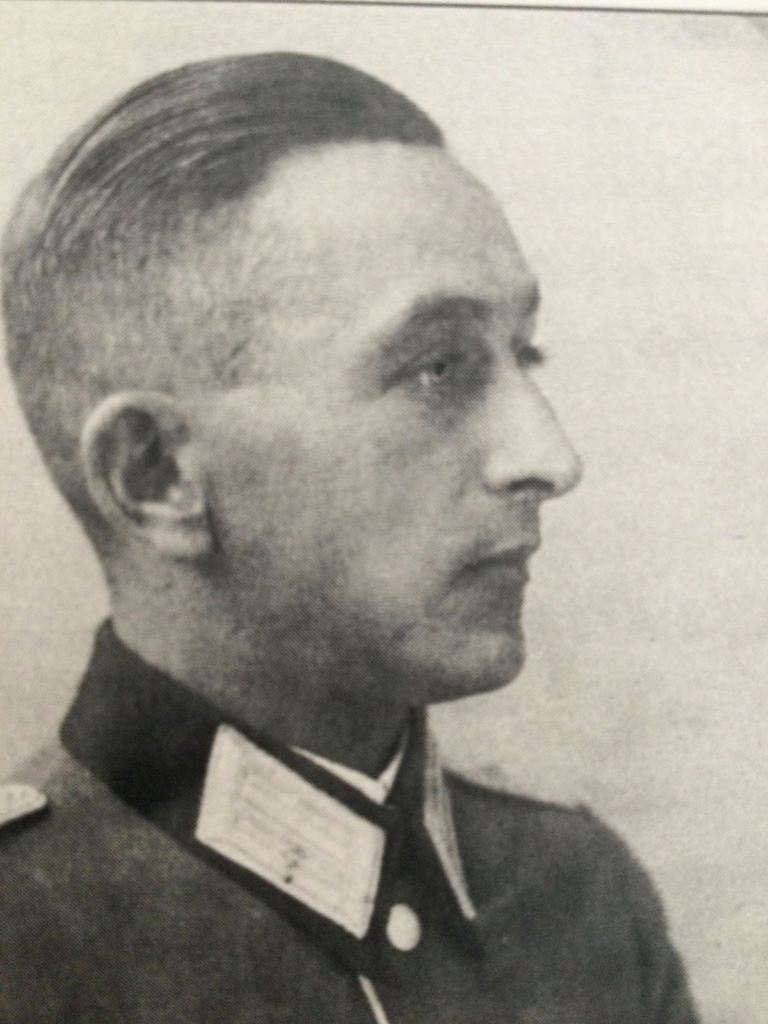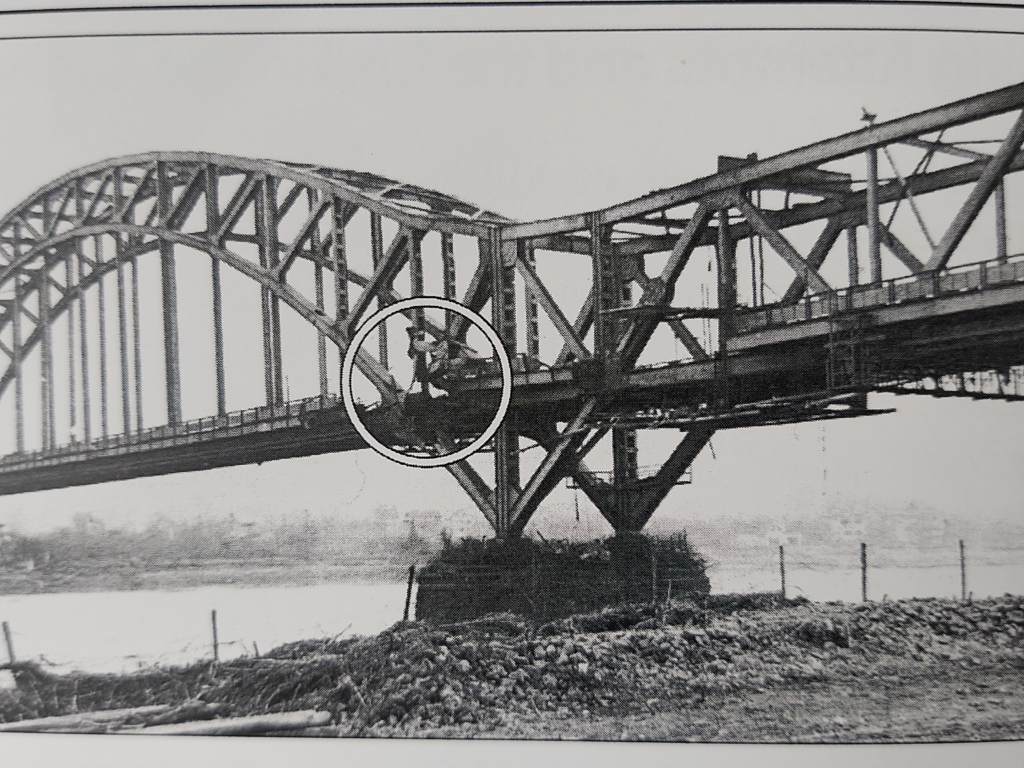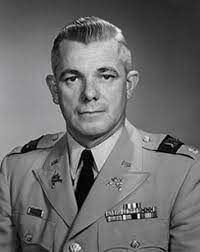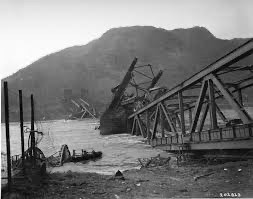Remagen is a village located on the left bank of the Rhine, between Bonn and Koblenz.
The bridge was a remnant from WW1. Construction took three years and was put into operation in 1918, mainly to be able to supply the German front in the west more quickly. The bridge was given the name of the commander-in-chief Erich Ludendorff.
The bridge was the design of Karl Wiener and in terms of construction, roughly equal to the Hindenburg bridge between Rüdesheim and Bingen.
The bridges had a double track for train traffic and two lanes for pedestrians.
Two flood bridges were built on the left bank near Remagen. The steel structure rested on masonry with two towers and two pylons in the river. On the right bank near Erpel, the bridge also crossed the railway. After 50 meters, this part of the bridge turned into a 383-meter-long tunnel with a left turn below the Erpeler Ley.
In 1939, the bridge was equipped with a 600 kilogram of heavy explosive to be able to blow up the bridge if the situation asked for it. But due to the success of the Blitzkrieg, the bridge became indispensable for a quick supply of the German troops in the west and it was decided to dismantle and temporarily store the explosives.
After the success of the Allied advance after the Normandy landings, the explosives were returned to the bridge. The original load of 600 kilograms of TNT had now been used by the Wehrmacht elsewhere and the 300 kilograms of Donarite now delivered was of a significantly lower quality.
The Wehrmacht therefore planned to blow up the bridge if necessary, of course to halt the Allied advance. But the Allies also wanted to avoid the supply of German reinforcements and tried to bomb the bridge in October and December 1944 and the end of January 1945. The bridge was hit several times, but remained standing.
After the success of Operation Plunder, with the aim of crossing the Rhine, consisting of an airborne operation Varsity and Operation Archway, it would not be long before the Allies would be on the banks of the Rhine.
Hitler had ordered the Wehrmacht not to blow up the bridge until the Allies had arrived less than 8 kilometers from the bridge, in order to give the German retreating troops the opportunity to use the bridge.
The bridge is still intact

On March 7, 1945, the U.S. 9th Armored Division had left for the Rhine at six. After a number of skirmishes, after a number of hours Lieutenant Karl Timmerman reached the ridge west of the Rhine. At the top of the ridge near Remagen, Timmerman saw the Rhine for the first time and, to his great surprise, found that the bridge was still intact.
Harold Larsen and Frank Vaughn had previously established during a reconnaissance flight in a Piper Cub, that the bridge was still intact and German troops retreated over the bridge.
Timmerman immediately reported this miracle to General William Hoge. Hoge immediately ordered Timmerman to launch the attack on the bridge, after a rumor that the bridge would be blown up at 16:00.
Chaos on the German side
Normally I do not like to go into great detail, but in this case, in order to make the chaos on the German side clear, I have to go a little deeper into the situation.
Since February 1945, the responsibility for the defense of the bridge has been repeatedly exchanged. On February 26, Lieutenant General Kurt von Berg gave responsibility to the Fifth Army to defend the two bridges. Because the assignment was not confirmed in writing, the assignment was not carried out until 28 February. It was communicated by telephone that the defence of the bridge fell under the responsibility of the VDG division. Lieutenant General Von Botsch was ordered to set up the defense group Bonn-Remagen on 1 March. However, on March 2, everything was retracted and Von Berg had to make sure that everything stayed with the old. Bratge received the message that everything remained as it was.
At the end of February, the 5th Army was relieved by the 15th Army under the leadership of Gustav von Zangen. On 6 March, General Otto Hitzfeld was told via the telex that the defense of the bridge was under his responsibility and Scheller was instructed to take command immediately. Scheller arrived in Remagen in the morning of March 7 and took over command from Bratge. Even more, Bratge once received the message that the bridgeheads of Bonn and Remagen fell under the defense work Bonn – Remagen and that on March 6 the responsibility had been transferred to Major General Richard Bothmer.
Due to poor or no communication, the leaders who had to make the decisions were not informed or far too late.
Blowing up the bridge

From November 1944, Willi Bratge was responsible for the defense and possibly blowing up the bridge. Major Scheller had been ordered to take over the order from Bratge, only this had never been communicated to Bratge and therefore knew nothing about it. Scheller ordered the blowing up the bridge, but the person responsible for inflating, Carl Friesenhahn did not trust the assignment because he normally communicated with Bratge and requested a written confirmation of the assignment. When the order was confirmed at 15:20, Friesenhahn put the procedure into effect to blow up the bridge. Friesenhahn turned the key but nothing happened at all. After a number of attempts, a volunteer was called to light the 75 meter far away wick by hand. Petty Officer Faust began his journey under murderous allied fire. He managed to light the wick and during the retreat of Faust the cargo exploded. But when the smoke was raised, the bridge was still on its pillars. Friesenhahn had already had little faith in the replacement 300 kilograms of Donarite instead of the 600 kilograms of TNT that was originally intended for the bridge. But the explosive had weakened the construction and to a large extent torn away the wooden floor.

Timmerman realized that the bridge was still usable and ordered the bridge to be crossed. First, a group of engineers led by Lieutenant Mott neutralized the remaining ignition mechanisms and loads. At 16:00 Sergeant Alex Drabik reached the other side of the Rhine and was therefore the first American to cross the Rhine.
During the first 24 hours after the bridge was conquered, the Americans managed to transfer 8000 troops from various parts of the 9th Armored Division and the 78th Infantery Division. By 00.15 on 8 March, the bridge had been strengthened and 9 Sherman tanks could use the bridge. These Shermans were deployed directly to defend the bridgehead.
German opposition

The Germans did not accept the conquest of the bridge without a fight. On March 7, convenience calls attempt to blow up the bridge with explosives, On March 8 and 15, the Luftwaffe tried to attack and destroy the bridge. None of these attempts succeeded completely. However, the technical state of the bridge did not get any better. The Luftwaffe deployed 367 aircraft within 9 days, of which 106 were shot down by the Allies. Also an attack of 11 V2 missiles, launched from Hellendoorn in the Netherlands, did not hit a target. The nearest V2 struck 600 metres away from the bridge. On March 17, 6 divers from the Kriegsmarine went into the water to blow up the bridge. They, too, were discovered and arrested.
After driving M10 tanks over the bridge on 8 March at 3:00 a.m. and several groups of infantry had still crossed over, Hoge established his command post in Erpel across the street from Remagen.
The British and American rivalry
The old rivalry between the American generals Bradley, Hodges and Patton and British General Bernard Montgomery now broke loose. Thanks to the wonder of Remagen, the Americans had been given a chance that they did not expect. The first crossing of the Rhine by the Americans was not in the taste of Montgomery. Montgomery said his military glory was stolen by the Americans. On March 15, Patton crossed the Moselle and on March 22 the Rhine at Nierstein-Oppenheim, a day before Montgomery started his planned attack on the Rhine.
John (Jack) Hyde – Military Police Corps

During the Battle of the Bulge, John Hyde stopped General George Patton from entering an area where German soldiers had just been captured. Hyde expected problems, but was promoted by Patton instead. When Patton came across Hyde again at the bridge, Patton checked whether Hyde’s promotion had indeed been carried out. Very different it was with a visit from Montgomery to the bridge. Montgomery ordered the traffic to stop to take some pictures. Hyde refused to carry out this assignment and Montgomery dripped off. A complaint was filed, Hyde was called to the U.S. high command and immediately returned with a wink.
Hyde played an important role in organizing traffic across the bridge. Through his dedication and organizational talent of him and his group under fierce enemy fire, many troops and equipment have been able to make use of the bridge. Due to the contribution of Hyde and his group, the conquest and use of the bridge at Remagen has been able to shorten the war by 6 months. After the war, John Hyde played an important role in the security of Washington’s subway system by realizing crime prevention procedures. He then became a security specialist for the subway systems in New York City and Atlanta. For his actions in WW2, he received the Silver Star during the war.
The bridge collapses

In the afternoon of March 17, when 200 military engineers were working to reinforce the bridge, the bridge collapsed. 7 soldiers were killed and 23 missing. They were never found again. A further 3 people later died.
Hitler’s Tribunals
Two days after the loss of the bridge, Hitler set up a special mobile court to bring those responsible to justice. Bratge was sentenced to death, Friesenhahn was exculpated. Fortunately for both of them, they had been captured by the Americans. Later, on 13 March, Scheller and Peters were also found guilty, sentenced to death and executed the same morning. Peters was responsible for the ultra-secret weapon system Henschel HS297 missile launcher and prevented Scheller from blowing up the bridge earlier, because he wanted to get the advanced system safely over the bridge. The same fate struck Kraft and Strobel. Strobel and his subordinate Kraft were responsible for placing the loads to blow up the bridge, which only partially succeeded. A counter-attack from Kraft was also repulsed and failed. They, too, were found guilty and executed.
These convictions labeled these officers as cowards and losers, but in reality they have fallen victim to the many unexpected and unfortunate events.
Source: The Miracle of Remagen by Wolfgang Gückelhorn and various internet sides